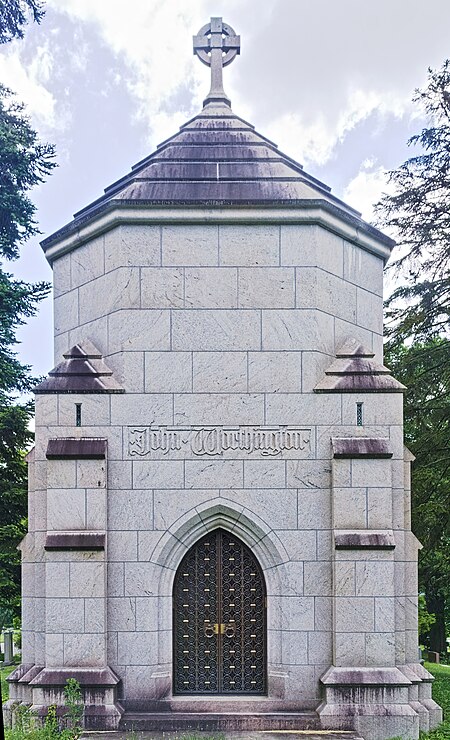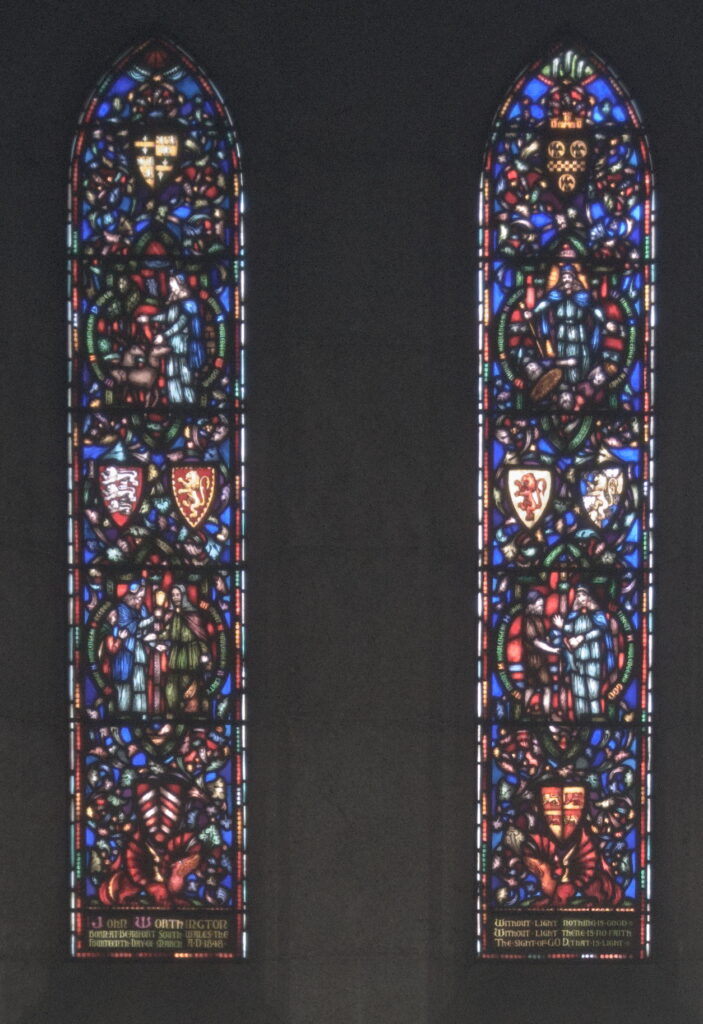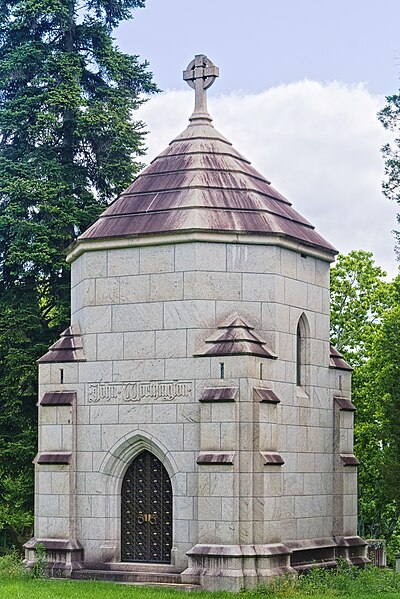
A small and simple rustic Romanesque mausoleum that still bears its decades of accumulated industrial blackness.


A proper peripteral (meaning “with columns all the way around”) Doric temple that makes a grand impression at any time of year, but especially with fall colors as a backdrop. Its obvious model is the Temple of Hephaestus in Athens.







Judge William Wilkins was the owner of the estate called Homewood, whose grounds are now the Homewood Cemetery. His mausoleum is the oldest in the cemetery, which was built around it, and it is a model of the original Mausoleum at Halicarnassus.


Older family gravestones are gathered around the monument, including the grave of Judge Wilkins’ father, Captain John Wilkins, who fought in the Revolution.



More pictures of the Wilkins mausoleum, including transcriptions of the four inscriptions.

Architect Louis Stevens, who had designed the Worthington mansion in Squirrel Hill (now part of Temple Sinai), also designed this splendid mausoleum for Mr. Worthington to move into after his demise. It is one of the most spectacular mausoleums in the Homewood Cemetery; and, unlike most Gothic mausoleums in Pittsburgh, it takes its inspiration more from castles than from churches.


The mausoleum is approached by a stairway that is a work of art in itself.








